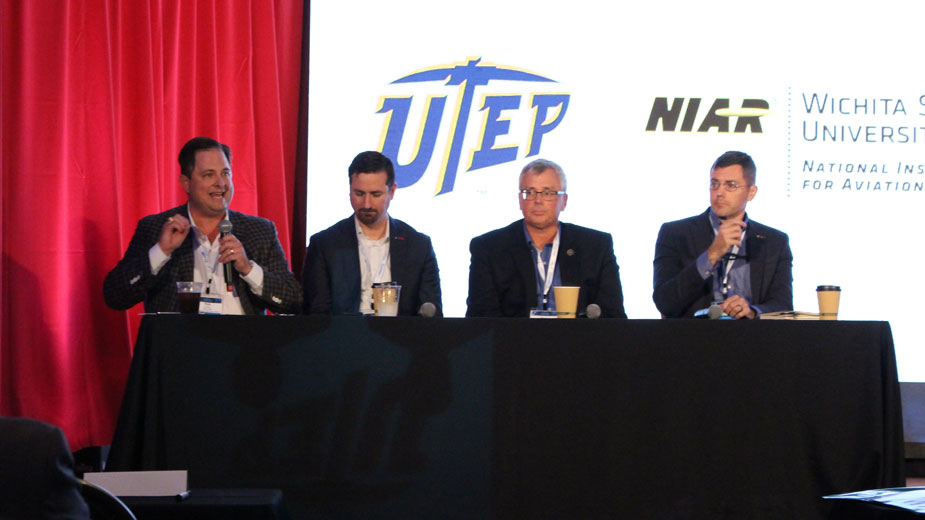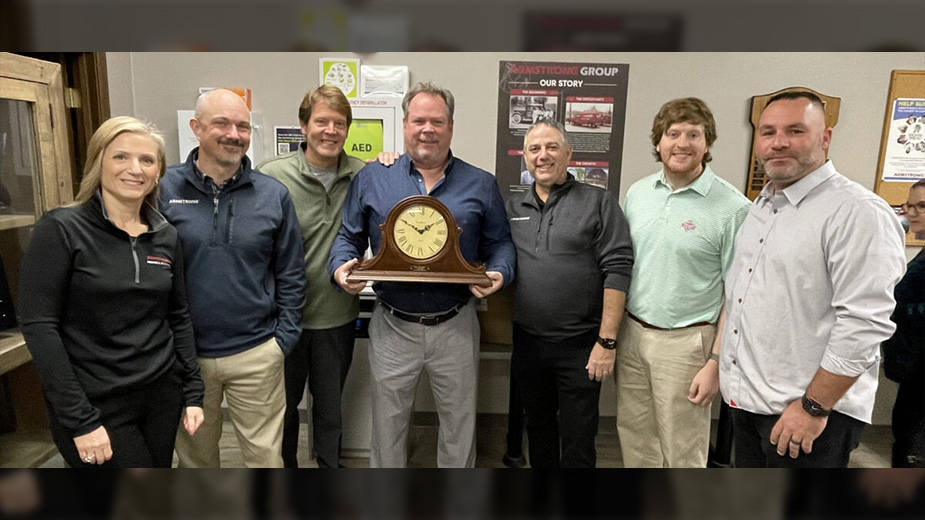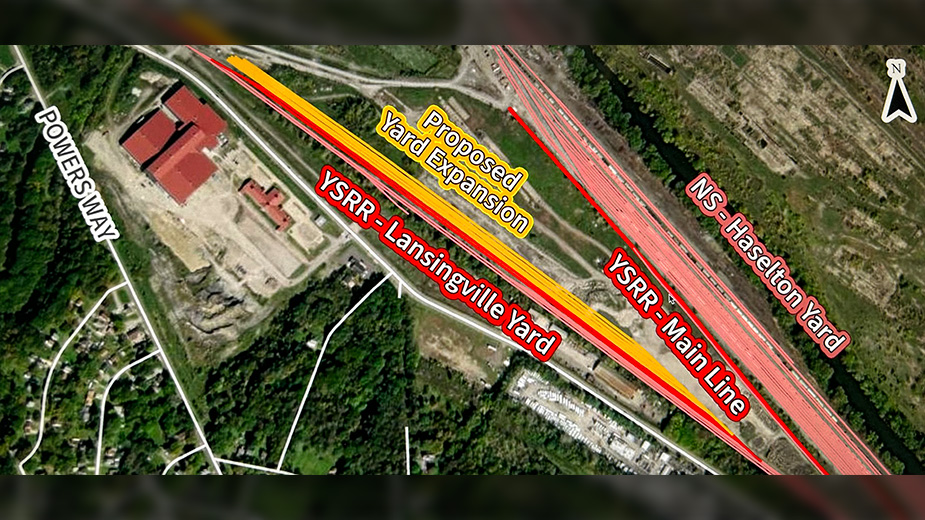America Makes’ Satellite Centers Build Ecosystems Across US
YOUNGSTOWN, Ohio – To showcase what America Makes can mean for businesses, the director of the satellite center at Texas A&M University points to the three metro areas his center works with most often: Austin, Dallas and Houston.
“Dallas is mostly interested in aerospace, biotech and pharmaceuticals. The Austin folks are interested in production, technology, machinery and food processing. And Houston talks about energy,” said Rob Gorham, director of the Texas A&M Engineering Experiment Station. “We serve as an opportunity to get additive manufacturing technologies into all these market sectors that are very valuable to all of us at the end of the day.”
Texas A&M was named the second America Makes satellite center in March, followed by Wichita State University in July. The first satellite center was University of Texas at El Paso, which received the designation in 2015, three years after America Makes opened in Youngstown.
“The infrastructure we’re creating with these satellite centers is varied, whether it’s in capability at UTEP and their lab with advanced equipment, a network at Texas A&M through their reach with elected officials and alumni or [the National Institute for Aviation Research at Wichita State] in aerospace,” said Erin O’Donnell, director of partnerships and community relations at America Makes. “As we go through 2019 and 2020, those are the three things we’re looking for: capability, network and specific industries to work in.”
Gorham and O’Donnell – joined by Chris Holhouser, technical director of the National Institute for Aviation Research; Ryan Wicker, director of the Keck Center for 3D Innovation at UTEP, and Dennis Butcher, program manager of the Air Force Research Lab, which is a partner of America Makes though not a satellite center – were at America Makes’ annual Members Meeting & Exchange on Tuesday for a panel discussion on the satellite centers.
In addition to its work in researching how additive manufacturing can be brought to the aerospace industry, Wichita State also works to inform federal standards for the industry, Holhouser said. Founded in the 1930s, the lab was among the first in the country to provide a neutral testing site for aerospace manufacturers. That foundation of competing businesses working together has carried into the work done today, he said.
“Some of the policies [the Federal Aviation Administration is] coming out with are directly spawned from the work we’re trying to do to answer key questions. Foundationally speaking, there are still gaps in how we do testing, how we do characterization and how we go through established capabilities,” Holhouser said. “We’re not just transitioning into parts, but in standardization.”
At UTEP, Wicker and the team at the Keck Center for 3D Innovation are working to develop new membership models for America Makes – which would allow fees paid by nonmembers to use America Makes facilities to go toward their membership if they eventually decide to join – and is working at developing a pipeline of engineering talent for companies like Lockheed Martin.
“We just announced Lockheed Martin is opening a storefront on campus to directly recruit engineers,” he said. “There’s tremendous need, as the workforce is retiring, for engineering in aerospace and defense. I’ve seen numbers in excess of 5,000 engineers in demand now. Just a quick search of additive manufacturing demand, last month we saw online 1,500 open opportunities.”
And at Texas A&M, ground broke last week at the $130 million Bush Combat Center, aimed at providing space for technology research to address problems faced by the Army. The center is slated to open in June 2021.
“It’s a huge investment by the state and university to build several facilities. We’re building a manufacturing facility, integration facility, commercialization facility and a proving ground,” said Gorham, who served as executive director of America Makes before taking his position at Texas A&M in May. “It’s all about application and integration. I’d like us to take advantage of this content coming from research projects and find ways to give them platforms beyond just research.”
While there are similar shared goals for the sites, each satellite center is focused on its specific area and was brought in for its work in that field, said the executive director of America Makes, John Wilczynski.
“It doesn’t make sense for people to work on the same thing. Part of our role is to guide people through what makes sense for them, whether it’s an investment of time or resources,” he said. “We’ve identified the individual satellite centers to take on relatively specific tasks. They focus on the key needs of their communities and leverage their universities to take advantage of that.”
For now, the organization is focusing on managing its growth over the past year – going from one satellite center to three in the span of just a few months – but he outlined a few points for what would make a good addition.
“What we’re looking for are folks who embrace our mission. Everyone at the satellite centers today very much understands the mission and adopts that, so they carry it through their communities,” he said. “We want to make sure we’re diverse and targeted in what we’re doing, whether it’s industry-specific and there’s an area we know that needs engaged or a particular region that could build out the supply chain.”
The four panelists agreed that America Makes is beyond the point of doing research for research’s sake. The next step is figuring out how to get the technologies developed by America Makes and its 200-plus partners into widespread use.
“Our mission is to improve economic development. As an agency, our responsibility as the director of manufacturing initiatives is to transfer technology from research to useful application. The other part of that is enhanced educational systems,” Gorham said of the Texas A&M Engineering Experiment Station.
Such moves are possible, said the Air Force Research Lab’s Butcher. He pointed to the arrival of Fit Frames in Youngstown over the summer. The company moved its operations here from California because the resources it needed weren’t available elsewhere.
“One of the biggest advantages of having satellite centers established is what you see here in Youngstown. America Makes is partnering with Youngstown Business Incubator and other local companies. There’s a bubbling up of energy and new companies,” he said. “They couldn’t do the work they’re doing or deliver their product to market without the ecosystem and America Makes. I’d like to see that collaboration and that mentality transplanted to other ecosystems and I think they’re well on their way.”
Pictured: Rob Gorham, director of Texas A&M Engineering Experiment Station; Chris Holhouser, tchnical director of National Institute of Aviation Research at Wichita State; Ryan Wicker, Keck Center for 3D Innovation at University of Texas at El Paso; and Dennis Butcher, program manager of the Air Force Research Lab.
Copyright 2024 The Business Journal, Youngstown, Ohio.



